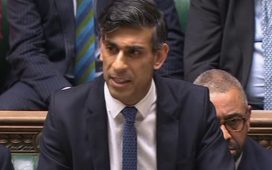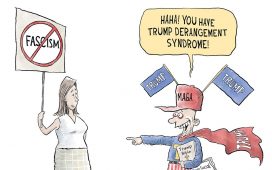The UK is leaving the EU at the stroke of 11pm on Friday 31 January.
And thanks to the Brexit deal, nothing much will change to your everyday life for 11 months.
Passports, visas, healthcare, driving and trade will remain more or less as they are now. But after 1 January 2021 there could be major changes, especially if there is no trade deal with the EU.
We’ve written more about those changes here, but what you need to know is this: the UK has a Brexit deal. It helps stabilise the process of leaving the EU. But it does not deal with the future relationship with the continent after that.
Here is a short guide to what the Brexit deal is, what it does, and what it doesn’t do.
What is the Brexit deal?

(Image: Crown Copyright)
The ‘Brexit deal’ is an international treaty that makes it legal for the UK to leave the EU.
It consists of the 585-page Withdrawal Agreement that Theresa May agreed between the UK and EU – plus 64 pages of amendments from Boris Johnson to change rules on Northern Ireland.
It governs the very complicated process of becoming the first country ever to leave the EU – disentangling the nation from thousands of EU laws built up over decades.
That deal has now been passed into law by the UK Parliament (through the Withdrawal Agreement Bill) and European Parliament.
That means the UK will legally have left the European Union at 11pm on January 31 and be unable to cancel Brexit.
What does it do?

(Image: Michael Mayhew/Sportsphoto Ltd)
The deal is designed to ensure there aren’t legal gaps when EU law automatically ends on Brexit day.
Most importantly it creates a ‘transition period’, which extends all EU laws until 31 December 2020 while the UK and EU negotiate a permanent trade deal.
The Brexit deal said this transition period could be extended by two years, but Boris Johnson decided to make that part illegal when he translated the deal into UK law.
The deal also includes guarantees on the rights of EU citizens who are already here to stay, with a new ‘independent monitoring authority’ to ensure their rights are upheld.
EU citizens can continue arriving in Britain until 31 December 2020 (and vice versa) but must then apply for “settled status” in order to be able to stay.
Meanwhile the deal lays out the framework for a £39bn ‘divorce bill’, paid from the UK to the EU over several decades (most of it near the start) to cover outstanding commitments between both sides.
Crucially, the Brexit deal also includes the arrangements for Northern Ireland…
What does it do for Northern Ireland?

(Image: AFP via Getty Images)
By far the most difficult question was Northern Ireland – how to solve the problem of trading with both the Republic (EU) and Great Britain (not EU) at the same time.
The first version of the Brexit deal, secured by Theresa May, contained a “backstop” which would have forced the whole of the UK to follow EU customs rules with no time limit.
Boris Johnson axed that for a hybrid system – with different rules for customs and the single market.
Northern Ireland is part of the UK’s customs territory. But firms will have to sign customs forms if they send goods between Great Britain and Northern Ireland – and pay customs duties if those goods are likely to move on to the EU in future.
Meanwhile Northern Ireland and the Republic will share some EU single market rules – forcing checks on manufactured and agricultural products crossing the Irish Sea.
The Northern Ireland Assembly – known as Stormont – will get a vote every four years on whether to let EU law continue in this way. But this vote could be passed by a simple majority – denying the DUP a veto on staying under EU laws long-term.
What does it not do?

(Image: PA)
Apart from a brief political declaration, the Brexit deal doesn’t say what happens from January 2021.
That will be governed by a trade deal between the UK and EU, talks over which begin in February 2020.
Boris Johnson wants a Free Trade Agreement between the UK and EU a bit like one with Canada, but that took the EU seven years to agree and sign.
If it doesn’t happen by 31 December 2020, the UK will leave in a ‘no deal’ Brexit which ramps up restrictions on movement and tariffs on goods. There could be queues at ports and changes to everything from visas to roaming.
Wrapped up in that deal will be many, many issues, but also those around workers’ rights. Critics had wanted Boris Johnson to tack to future EU rules on workers’ rights, but the PM dropped those assurances from his version of the deal.













